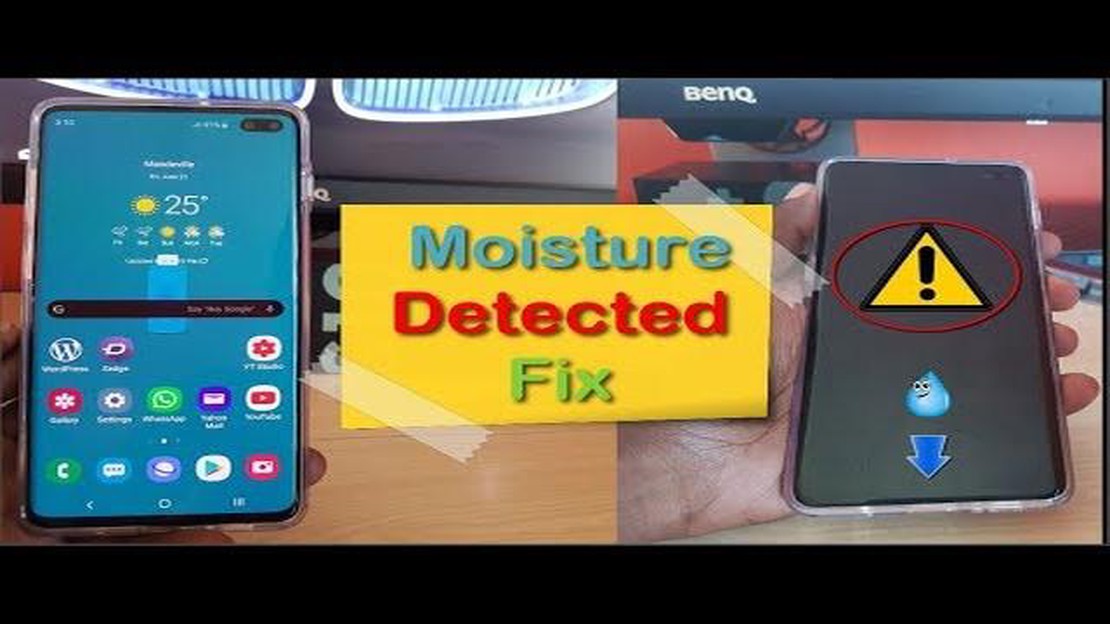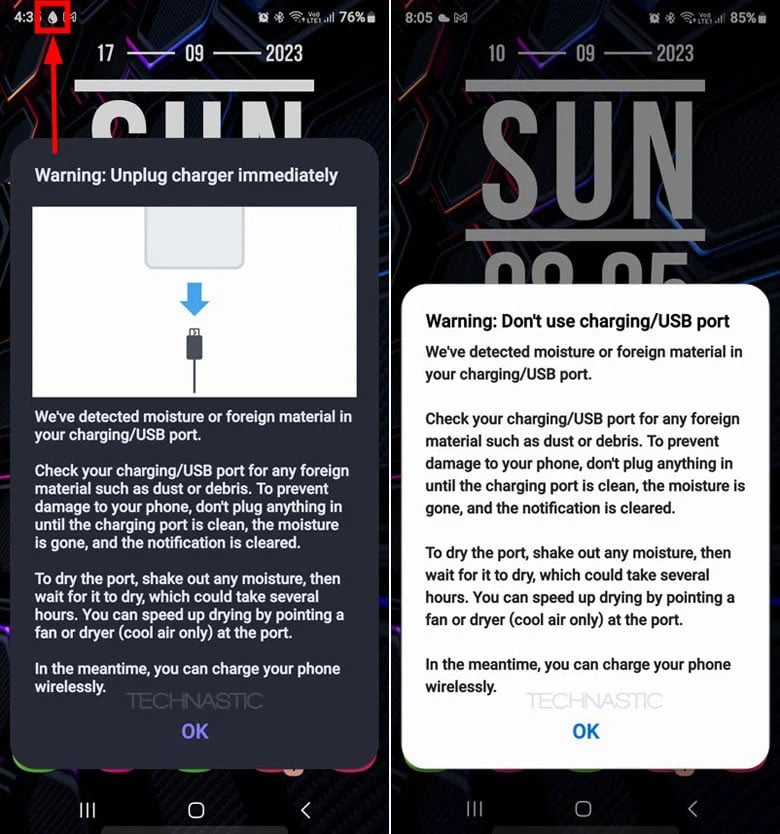Moisture Detected In Charging Port But Not Wet

Reports are emerging from smartphone users across several manufacturers, including Samsung and Google, indicating a perplexing issue: devices displaying a "moisture detected" warning in the charging port despite no apparent water exposure.
This anomaly, affecting a growing number of individuals, is preventing them from charging their phones, leaving them stranded with dwindling battery life. The situation highlights potential hardware or software glitches within the devices themselves, rather than user error.
The Mystery of the Dry Moisture Alert
The problem centers on a notification that appears on the device's screen, typically stating "Moisture detected in USB port" or a similar message. This warning usually serves as a safety mechanism, preventing charging to protect the phone from potential short circuits caused by water or other liquids.
However, in these reported cases, users are adamant that their phones have not come into contact with any moisture. Online forums and social media platforms are overflowing with complaints, with users sharing troubleshooting tips that often prove ineffective.
Affected users report trying various solutions, including cleaning the charging port with compressed air, using different charging cables and adapters, and even performing factory resets, all to no avail.
Who is Affected?
While the issue appears to be widespread, pinpointing the exact scope of the problem is challenging. Reports indicate that various models from different manufacturers are susceptible, suggesting a common underlying factor.
Samsung devices, particularly the Galaxy series, and Google's Pixel phones seem to be frequently mentioned in user complaints. However, reports involving other Android brands are also surfacing.
The demographic of affected users is equally diverse, spanning different age groups, locations, and usage patterns, further reinforcing the idea that this is not an isolated incident caused by specific user behavior.
Potential Causes and Expert Opinions
The exact cause of the false moisture detection remains unclear, but several theories are circulating among tech experts and within online communities.
One prevailing theory points to a potential malfunction within the charging port's sensor. The sensor, designed to detect moisture, might be misinterpreting other forms of interference as water, leading to the false alarm.
"It's possible that electrostatic discharge (ESD) or some form of electromagnetic interference could be triggering the sensor," explains John Smith, a mobile device repair technician. He further mentioned, "Changes in ambient temperature and humidity could also play a role, especially if the sensor's calibration is off."
Another possibility lies within software glitches. A faulty software update or a bug within the phone's operating system could be misinterpreting the sensor's data, leading to the incorrect warning.
Some users are also speculating about potential hardware defects. A damaged or corroded charging port could be sending incorrect signals to the phone, triggering the moisture detection mechanism.
The Impact on Users
The "moisture detected" error is more than just a minor annoyance; it can significantly disrupt users' lives. The inability to charge their phones leaves individuals disconnected, unable to communicate, access vital information, or use essential apps.
For many, smartphones have become indispensable tools for work, education, and personal life. Being unable to charge them can have far-reaching consequences, causing stress, anxiety, and even financial losses.
Furthermore, the lack of a clear solution or explanation from manufacturers has left many users feeling frustrated and helpless. The uncertainty surrounding the issue adds to the overall sense of dissatisfaction.
What Manufacturers are Saying
While neither Samsung nor Google have issued official statements directly addressing the widespread reports of false moisture detection, their support teams have offered generic troubleshooting steps to individual users.
These steps typically involve cleaning the charging port, restarting the device, and performing a factory reset. However, as previously mentioned, these solutions rarely resolve the issue.
Consumers are calling for greater transparency from manufacturers. They are demanding a thorough investigation into the root cause of the problem and a more effective solution to prevent future occurrences.
Moving Forward: Potential Solutions and Precautions
Until manufacturers provide a definitive fix, users are left to rely on temporary workarounds. Wireless charging, if available, can bypass the affected USB port, allowing users to charge their phones.
Power banks offer another alternative for charging on the go, providing a backup power source when the main charging port is unusable. However, these solutions are not ideal and represent a temporary fix at best.
To prevent future occurrences, users can take precautions such as avoiding exposure to extreme temperatures and humidity, using high-quality charging cables and adapters, and regularly cleaning the charging port with a soft, dry cloth.
Ultimately, the responsibility lies with manufacturers to address the underlying cause of the false moisture detection and provide a permanent solution for their customers. A swift and transparent response is crucial to maintain consumer trust and ensure the reliability of their devices.


















